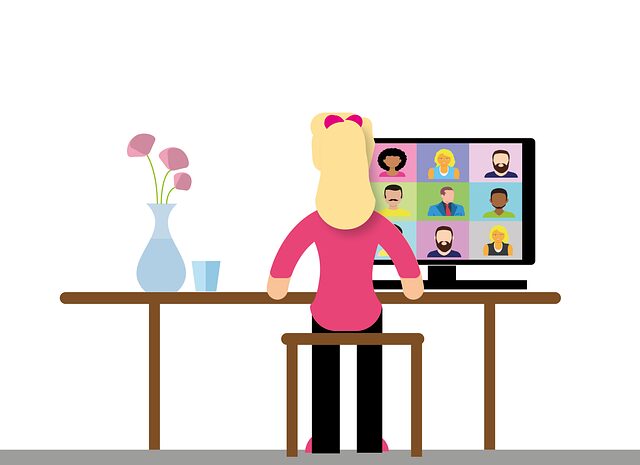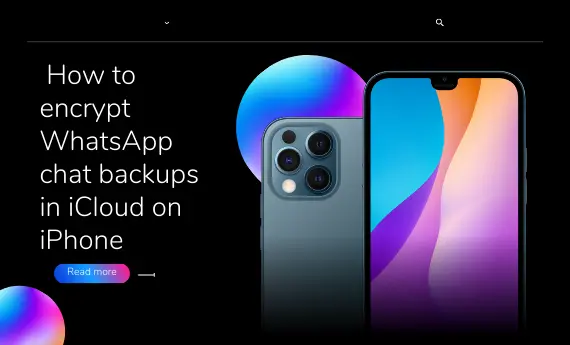The Easiest Ways to Hide Your IP Address
The Easiest Ways to Hide Your IP Address – If you want to ensure your location is kept safe, there are a number of precautions you can take to make sure you’re internet traffic isn’t detected by others. Whether you’re looking to hide IP for fun or more serious reasons, there are simple ways to keep your location private without too much fuss. It’s best to learn about these methods before anything goes wrong.
The Easiest Ways to Hide Your IP Address
It’s not unheard of for malware to intercept your outgoing traffic and tell everyone you’re online. It’s also possible your internet service provider has been compromised so that you can be tracked down by anyone who knows where you live. There are a number of simple methods you can use to conceal your IP address.
Start by downloading and installing the Tor Browser. This is a free, open source browser designed to keep you anonymous online. It protects your identity from being discovered and keeps you from being tracked by malware, among other things.
What is an IP address?
An IP address is a unique identifier assigned to devices that use the Internet Protocol to communicate. Most computers have one or more IP addresses.
When you connect to the Internet with a router and a modem, your computer can receive both an IP address and a subnet mask. The subnet mask determines the number of bits in the first part of an IP address, which tells you where the second part is located.
For example, the IP address 11.22.33.44 tells you that this is a number in the range 1-255 which is represented by the binary value 111100001110. In order to communicate with other computers on the Internet, your computer needs an IP address. A router determines the local IP address of computers connected to it.
A router is the main device connecting a local network to the Internet. It has an IP address on the network and provides various routing functions between networks.
How do you obtain an IP address?
To obtain an IP address, you can either use a static IP address or a dynamic IP address. A static IP address is a permanent IP address that is assigned to your device.
On the other hand, a dynamic IP address is an IP address that changes every time you use the Internet. Some people prefer to use a static IP address since it’s always the same and is not dependent on your device or router.
How can you determine the IP address of your router?
Before we get into how to view the IP address of your router, let’s take a look at some guidelines. Get a Static IP Address:
If you want to use a static IP address, then you should do the following: • Open the command prompt.
• Type in “ipconfig” and press Enter.
• When your computer detects a new IP address, it should show the IP address. If it doesn’t, go to your router settings and check the IP address.
• If the computer is still unable to locate the IP address on its own, contact your ISP or consult a technician. Get a Dynamic IP Address:
If you want to use a dynamic IP address, then you should do the following:
• Open the Internet Explorer.
• In the Address bar, type in “123.45.67.89” and press Enter.
• You should see the same IP address in the Address bar as your previous dynamic IP address. • You are now connected to the internet through this IP address.
• To test if you are able to access the internet, type in a website such as www.google.com and press Enter. You should see a blank page in the browser.
How do you hide your IP address?
To hide your IP address, you can use a proxy or a VPN. A proxy is a server that acts as an intermediary between your computer and the websites you visit. Your computer sends your request to the proxy, which sends it on to the website and then sends a response back to your computer. Proxies provide good privacy and anonymity, but can slow down your internet connection significantly.
A VPN service works in a similar way to a proxy. Your computer connects to a VPN server, which then connects to the internet through your preferred VPN server. The only difference is that your computer communicates directly with the website, so this method is generally faster than proxies.
Tor is a free software and an open network that helps you defend against a form of network surveillance that threatens personal freedom and privacy, confidential business activities and relationships, and state security known as traffic analysis.
Tor is a free software and an open network that helps you defend against a form of network surveillance that threatens personal freedom and privacy, confidential business activities and relationships, and state security known as traffic analysis. Tor is a free software and an open network that helps you defend against a form of network surveillance that threatens personal freedom and privacy, confidential business activities and relationships, and state security known as traffic analysis.
What are the risks of hiding your IP address?
There are a few risks associated with hiding your IP address. One is that you may be inadvertently exposing yourself to identity theft or other online security risks.
Another is that you may be exposing yourself to surveillance from your Internet Service Provider (ISP) and anyone else who may be tracking your online activity. These risks are serious but so is the risk that you will be keeping your Internet experience hidden from others.
What are the benefits of having an IP address?
This are some benefit that you can have by using an IP address.
1. To gain financial benefits from advertising.
2. To make use of the Internet to gather information about yourself, friends and others.
3. To install applications on your computer to protect you from viruses, spyware and other malicious software.
4. To run peer-to-peer filesharing programs to share and exchange software and other files.
5. To use the Internet for business purposes such as sending e-mail, running a website, using an FTP server, or chat rooms.
6. To play games such as Quake and other online games by using the Internet for distribution of high bandwidth.
7. To have an easy time connecting to the Internet using wireless connections such as Wi-Fi or Ethernet cable.
What happens when you hide your IP address?
When you hide your IP address, you are preventing others from tracking your online activity. This can be helpful for privacy reasons, or to avoid getting blocked from certain websites. When you hide your IP address, all traffic from your computer to the Internet is routed through a server operated by your ISP.
This means that there is a physical connection between your computer and the ISP’s server. This connection is made possible by either a broadband Internet connection or a wireless network connection.
To hide your IP address, simply select the “Use Network Address Translation” option in the “Internet Options” dialog box, shown below. The IP address that you enter in the “Internet Options” dialog box will be your computer’s new or anonymous IP address .
Different ways to hide your IP address
There are a few different ways that you can hide your IP address . However, they do come with some tradeoffs.
Method #1: Tunneling Your Web Traffic
This is the most common method of hiding your IP address that people know about. The browser running on your computer will send all of your web traffic through a proxy server. The proxy server will then re-route the traffic so that it appears to originate from the proxy server rather than the original source IP address. But if you try to access a website that is known to require a secure connection , the proxy server will drop your request. This is also known as a “Tor” proxy server.
Method #2: Virtual Private Networking (VPN)
This is a method of virtual private networking (VPN). It is used to create a secure encrypted tunnel between two network locations. In other words, this could be used as a way to hide your IP address. The VPN “server” is typically connected to a router or other device which is connected to the public internet.
Then all of your traffic will travel through the VPN server. For example, if you are using the United States version of the Netflix streaming service, this could mean that your ISP is required to perform multiple international hops to connect you to their servers. Using a VPN, you could route your traffic through the US and then out of the country.
But this would be only useful for you if you are connecting to a US server, not if you are connecting to a European server. And it may even be that the US server has multiple hops, whereas the European server is closer to your location.
Here’s how you might create a VPN connection:
VPN servers typically require that the client establish an authenticated session with the server before establishing a tunnel. For example, when a requesting client connects to a tunnel-based VPN server for the first time, the connecting client must first log into the VPN server and receive a user name and password.
Method #3: OpenVPN, L2TP and PPTP
OpenVPN is an Open Source VPN client that can be used to secure all types of communications. This includes file transfer, as well as data and email transfer.
Step 1: Before you can use OpenVPN, you’ll need to download the client. To download the latest version of OpenVPN, visit their website.
Step 2: Once downloaded, install the client by double clicking on the downloaded file. This will open the “OpenVPN” application.
Step 3: After installing, you should be able to connect to the VPN server by clicking on the “OpenVPN” icon from the Control Panel > Network and Sharing Center > Change adapter settings > Right click on network icon > select Properties > on the General tab, click on “Properties” button > then on the Security tab, click on “Advanced”.
Step 4: Click on the “Add” button, and select the protocol. Select “Tunnel”, and then click on “OK”. Then click on “OK” in the window that opens up. Then select “Start” from the same window.
Step 5: Now that you have the tunnel up, go back to your Control Panel > Network and Sharing Center > change adapter settings > right click on network icon > select Properties > on the General tab, click on “Properties” button & then on the Security tab, click on “Advanced”.
Step 6: Click on the “Add” button. Select “Name”. Type in the name of your router’s public IP address (such as – VPN_ROUTER). Then type in your username & password (for the connection). For an openvpn profile, leave the Shared Secret box blank. Then click on “OK”.
Step 7: Now that you have created the profile, double-click on it & then click on “Configure” button. Now, click on “Apply”. Now click on “OK” button. It should now appear that the connection is established & the VPN icon should show a green color.
Step 8: If the VPN connection is not yet established, go back to your Control Panel > Network and Sharing Center > change adapter settings > right click on network icon > select Properties > then click on “Properties” button & then you should see a tab called TCP/IP. Select “Use the following IP address” & type in your VPN router’s public IP address (such as – VPN_ROUTER). Then click on “OK”.
Step 9: Click on the “Close” button.
Is hiding your IP address illegal?
There is no one definitive answer to this question as the legality of hiding your IP address can depend on the specific circumstances. In some cases, it may be illegal to conceal your IP address, while in others it may be perfectly legal.
As such, I have included links to the corresponding articles, which you may find helpful when trying to determine if hiding your IP address is legal in your country: Hiding your IP address & Your IP Address & Identity Theft
The legality of hiding your IP address varies from country to country. If you are based in the United States and you wish to conceal your IP address, then you will need to be on a public network like a PureVPN, Tor or a proxy to hide your IP address.
If you are based in the United Kingdom and wish to conceal your IP address, then you will either need to purchase a new SIM card (e.g. T-Mobile) or you will need to conceal your IP address with a VPN like ExpressVPN, which provides both IRL and DPI-esque services.
4 reasons to mask your IP address
1. To protect your privacy
2. To prevent tracking
3. To access blocked content
4. To improve your security
How to get a fake IP address?
There are a few ways to get a fake IP address. One way is to use a proxy server, which will give you a new IP address that is not associated with your computer. A proxy server is a device that sits between you and your target website and gives you the ability to hide your location and make it appear that you are accessing the site from somewhere else.
Another way is to use a virtual private network (VPN). A VPN disguises your identity by encrypting all of the traffic you send and receive. VPNs are great, but they can also be expensive. They are usually best used to access blocked websites and to protect your privacy when surfing the web on a public network.
Conclusion
Looking to keep your IP address hidden? Here are the easiest ways to do it!









